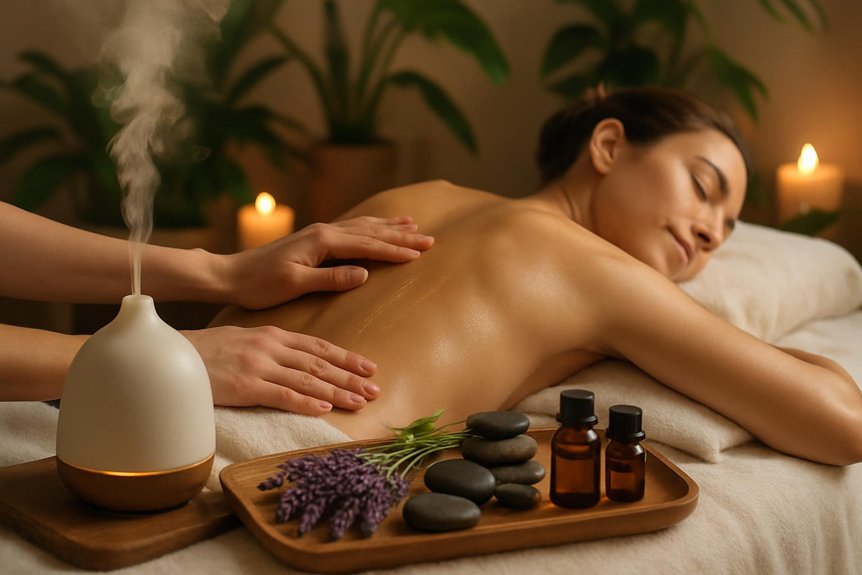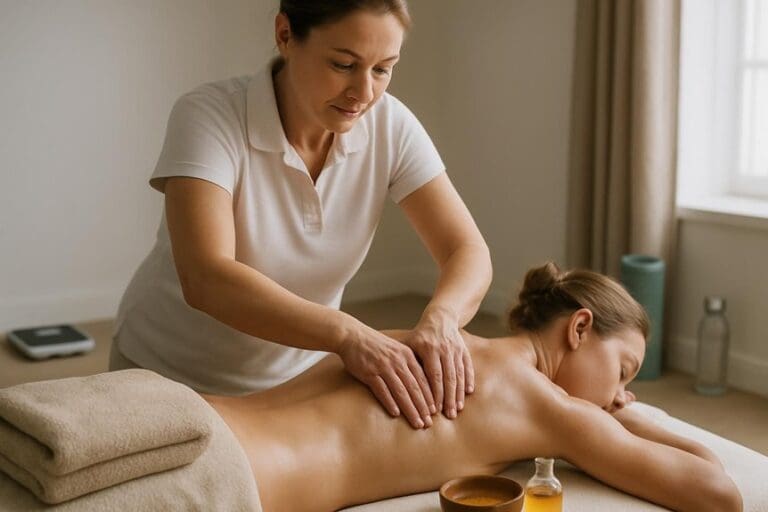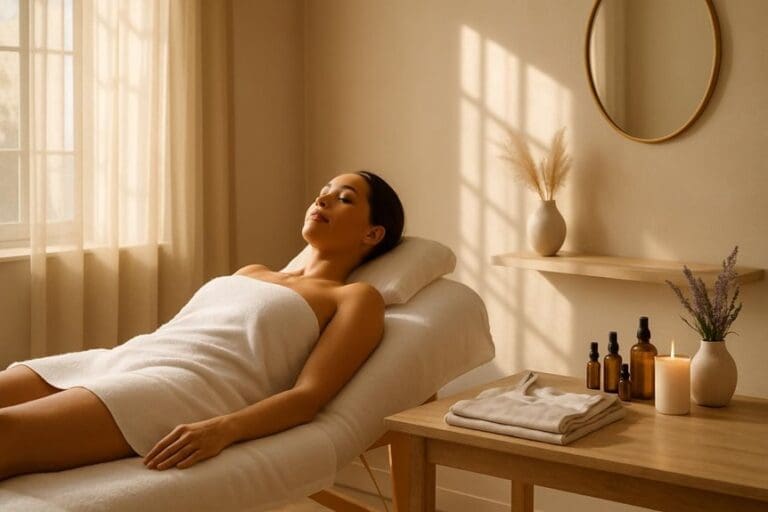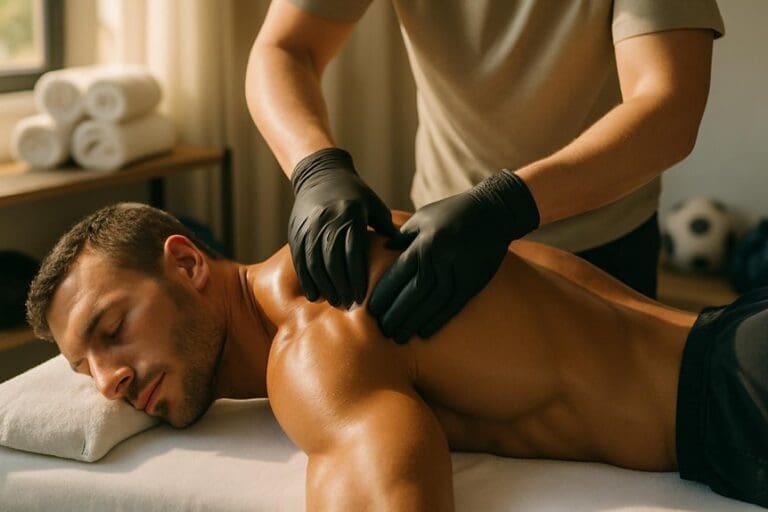Aromatic massage therapy combines manual manipulation of soft tissues with the therapeutic use of essential oils derived from botanicals such as lavender, eucalyptus, and frankincense. Oils are blended with carriers for skin safety and applied to facilitate absorption and inhalation, influencing physiological and emotional responses through the limbic system. This modality aims to reduce stress, foster relaxation, and promote wellbeing. Exploring its methods, key benefits, and recommended aftercare will further clarify its holistic impact.
How Essential Oil Massage Works
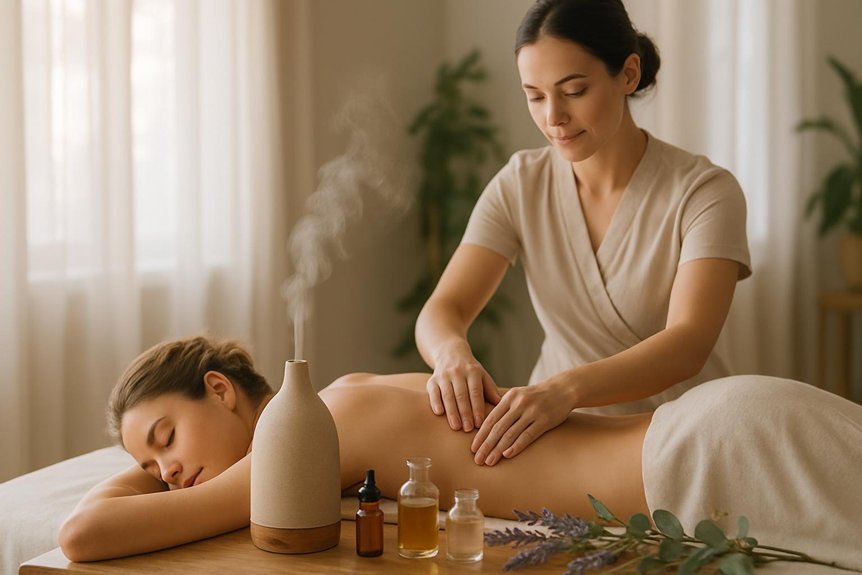
Utilising a combination of manual massage techniques and the application of concentrated plant extracts, aromatic massage operates through both physiological and olfactory pathways. Essential oils—volatile botanical compounds extracted from flowers, leaves, or roots—are blended with carrier oils and applied topically by skilled therapists.
In Spa & Massage clinics, the selection of essential oils is tailored to suit individual preferences, creating a multisensory experience. As the therapist performs effleurage, petrissage, and other targeted movements, the oils are absorbed transdermally, influencing local circulation and tissue response.
Simultaneously, aromatic molecules are inhaled, engaging the limbic system and modulating emotional and sensory perception. The delicate interplay of touch and scent forms the basis of this approach, fostering a subtle connection between body and mind in a deeply personal context. As described in aromatherapy massage tips, this therapy is designed to promote relaxation and facilitate healing through both its sensory and physiological effects.
Key Benefits of Essential Oil Massage
Why does essential oil massage continue to gain recognition among holistic therapies? The answer lies in its multidimensional benefits, integrating botanical science with the art of therapeutic touch. Aromatic massage leverages the pharmacological properties of essential oils—volatile plant extracts renowned for their physiological and psychological effects—delivered via gentle effleurage, petrissage, and lymphatic drainage techniques.
Evidence indicates reduction in perceived stress, alleviation of muscular tension, and enhancement of parasympathetic nervous system activity, promoting deep relaxation and emotional equilibrium.
At Spa & Massage, therapists tailor essential oil blends to individual needs, maximizing therapeutic outcomes and sensory pleasure. Clients often report improved sleep quality, mood stabilization, and heightened sense of wellbeing.
This nuanced approach fosters intimacy, inviting clients to reconnect with their own body’s rhythms and restore inner harmony.
Common Essential Oils and Their Effects
How do specific essential oils shape the therapeutic profile of a massage?
Each oil possesses distinct phytochemical properties that influence physiological and emotional states.
Lavender (Lavandula angustifolia) is widely utilised at Spa & Massage for its linalool content, known to promote relaxation and alleviate anxiety.
Eucalyptus (Eucalyptus globulus), rich in eucalyptol, supports respiratory function and invigorates the senses.
Sweet orange (Citrus sinensis) delivers limonene, fostering uplifted mood and gentle stress reduction.
Frankincense (Boswellia carterii) contains boswellic acids, facilitating grounding and emotional balance.
In our clinics, therapists carefully select and blend these botanicals to address individual client needs, ensuring a precise synergy of aroma and effect.
This botanical intimacy allows each session to be tailored, enhancing both therapeutic efficacy and sensory satisfaction.
What to Expect During Your Session
A typical aromatic massage session at Spa & Massage begins with a brief consultation, during which clients’ health status, preferences, and therapeutic goals are assessed by a qualified therapist.
The practitioner then selects essential oils based on chemotype, botanical origin, and therapeutic function—such as Lavandula angustifolia for relaxation or Citrus sinensis for mood elevation.
Diluted in a carrier oil, these extracts are applied using effleurage and petrissage techniques tailored to each individual’s needs.
The serene environment, curated for sensory immersion, encourages clients to focus on the nuanced aromas and gentle tactile stimulation.
Throughout the session, the therapist monitors responses, ensuring both physical comfort and emotional well-being.
This integrative approach fosters a sense of intimacy, trust, and deep relaxation, hallmarks of Spa & Massage’s philosophy.
Aftercare Tips for Lasting Results
Ideal post-session care markedly enhances the therapeutic effects of aromatic massage by supporting physiological assimilation of essential oil constituents and prolonging musculoskeletal relaxation.
Spa & Massage therapists advise clients to remain hydrated, as adequate fluid intake facilitates renal clearance of metabolized phytochemicals. It is recommended to delay showering for several hours to maximize cutaneous absorption and olfactory benefits of botanical volatiles.
Gentle stretching and mindful movement post-treatment encourage sustained myofascial release. At Spa & Massage clinics, clients are encouraged to rest quietly, allowing parasympathetic activation and cellular recovery.
Avoiding caffeine, alcohol, and strenuous activity further extends the calming influence of aromatic terpenes and esters. Such evidence-based aftercare practices ensure that the intimacy of the session lingers, deepening both relaxation and emotional connection.
Conclusion
In summary, aromatic massage therapy integrates botanical science with tactile techniques, substantiating the theory that essential oils—via olfactory and dermal pathways—modulate physiological and psychological states. Empirical evidence supports its efficacy in alleviating muscular tension and enhancing mood through mechanisms such as neurotransmitter modulation and vasodilation. Clients at Spa & Massage benefit from this synergy, experiencing personalized, plant-based interventions that demonstrably promote holistic wellbeing, therefore validating the therapeutic potential of aromatic massage within contemporary wellness paradigms.
